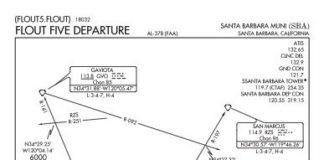Recently I took recurrent training as an insurance requirement—a good thing, for sure. As part of the pre-course review and studying, they sent me some FAA material about developing personal minimums At first glance, this seems like a prudent thing to do, and it suggests raising minimums to which you’ll fly based on recency of experience, winds, time of day, runway length, IMSAFE or PAVE considerations, and the like.
The day you took your instrument checkride, your minimums were the ones published on the chart, right? Can you imagine taking off the hood at 500 to go on an ILS during your checkride, and telling the examiner that you didn’t feel comfortable going any lower?
Perhaps a thoughtful examiner would applaud your conservatism, but you’d still be told to go practice some more until you were comfortable flying all the way to published mins. A less thoughtful examiner would probably scoff, and also end the ride, probably abruptly. Ever since that day, though, the FAA, the AOPA and other organizations have been urging you to set personal minimums that are higher.

Really, what we’re talking about here is proficiency. Are you, today, proficient enough to fly to mins, or should you add a couple hundred feet for the winds, another couple hundred for the shorter runway, and so on? But, there are two ways of looking at this and personal minimums only look at one way.
That one way, of course, is to put a mechanism in place to address your deficiencies, your lack of proficiency. Recognizing that flying an ILS all the way to a DH of 200 feet is difficult, maybe today you should raise that to 1000 feet. Congratulations! You’re now a safer pilot.
Really?
In essence, this structured program of setting higher personal minimums is telling us it’s okay not to be proficient. I believe that’s a dangerous precedent.
The other way to look at this is not to make allowances for substandard proficiency, but instead to assure that you maintain your proficiency so you can, indeed, fly to published minimums. Now, that will make you a safer pilot.
Perhaps it’s my airline background, or perhaps I’m just arrogant. But I would never think of planning an IFR flight unless I felt proficient enough to fly any reasonable approach all the way to published minimums. Sure, something might happen on the day of the flight or even on the way that might cause me to increase the margins a bit—and recognizing and reacting to that is a good thing—but planning to fly and simply excusing a lack of proficiency by increasing minimums seems to miss the point.
Of course, you’ll seldom need that level of proficiency. Even at the airline, probably not more than a few times in the 700 or so hours I flew each year would I fly to mins. Now that I’m down to around 120 hours a year, not only do I almost never see mins, I’m usually visual by the final approach fix.
Nonetheless, I train to always be capable of flying to mins—in a gusty crosswind, to a short runway, even if I’m not feeling like Superman that day.
Shouldn’t you?
—Frank Bowlin





I found this looking for info on IFR mins and I have to strongly disagree with the author. Think about it. Joe Average got his instrument ticket but only practices on instruments a couple times a year. It’s unlikely he will spend the money to be proficient flying to minimums, which I would argue requires flying on instruments once a month or more depending on the person. So should he give up his instrument ticket because of that? No, the simple solution is to raise his minimums to fit the level of proficiency he CAN maintain. This is elementary risk management.
By the logic you lay out here, as soon as a private pilot gets his ticket, he should go out and be able to fly in 1000 foot ceilings with 3sm visibility, in gusts to maximum demonstrated crosswinds in the mountains at night. But no, that sounds crazy for a brand new pilot, doesn’t it? A pilot should always limit his minimums to the level of proficiency he can maintain. Not all of us get paid to do that. The average airplane OWNER flies less than 50 hours a year in his own plane. I don’t know the average for a renter but it’s likely much less.